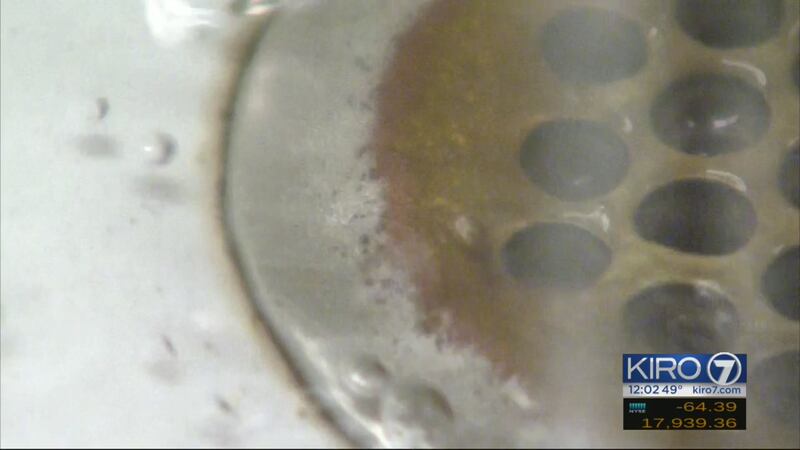SEATTLE, Wash. — Most Seattle residents concerned over water quality can breathe a sigh of relief.
After two days of extensive testing in five Seattle homes, Seattle Public Utilities confirmed Sunday that the city's water continues to be safe to drink.
But during a Seattle City Council meeting Monday, the city clarified that a bit.
Before the city council meeting, officials said testing five homes was enough, because they normally routinely check water at around 50 homes in the city on a random basis.
The homes tested were built before the 1930s, the homes shown to possibly have lead gooseneck connectors that leeched unsafe lead levels in Tacoma's water supply last week.
"The highest result we saw was 1.95 --- and every other level was less than that or down to non detect," said Wylie Harper with SPU.
But now they are saying more testing needs to be done.
SPU says their research shows some 8,000 homes and businesses in the city have galvanized pipes, which could have gooseneck connectors which Tacoma water officials say likely source for leaking lead in that city.
SPU started testing after learning last week that
had detected high levels of lead in four water samples taken from galvanized steel service lines last week.
Seattle area water customers were asked to take precautions against possible lead contamination in their water pipes by running their water for two minutes before using it if the water had not been run for more than six hours. They had said that precautionary measure was over, but as of Monday they are advising people in older homes to still flush water for a few minutes a day just in case.
At the city council meeting, SPU did not give a timeline on when they will start more testing.
Summary: So what was the problem?
- That lead from old gooseneck connectors between the water main and the house could get into the water.
- Seattle Public Utilities is reacting to the recent findings in Tacoma about these gooseneck parts.
- Seattle serves 500,000 water customers, and about 2,000 serves these connectors. They are most likely in houses built between 1920 and 1950.
- In Tacoma, up to 1,700 lead goosenecks may still exist in the area it serves. Click here for map.
The water advisory only applied within Seattle city limits, but that still affected 500,000 customers.
In Seattle, this translates to roughly 2,000 homes, which were likely built between the 1920s and 1950s.
SPU says the potential issue in its service area was probably limited to galvanized service lines. Galvanized pipes are iron pipes used for homes built before the 1950s.
Here were some other important points about this situation:
- Although Seattle has no connection with Tacoma’s water system, Seattle Public Utilities (SPU) immediately began work—both in-house and with our state regulators—to understand the extent to which our system could have a similar problem.
- SPU believed that, if the city's water was affected, it would have been limited to galvanized service lines.
- Seattle Public Utilities contacted a small number of home owners in areas across the city to sample water at homes serviced by galvanized lines, to see if there are elevated levels of lead.
About high lead levels found in Tacoma:
On Thursday morning last week, Tacoma Water officials announced they detected lead above the Environmental Protection Agency recommendations in four homes south of Lincoln High School.
Tacoma Water pinpointed that gooseneck pipes, made out of lead, may be to blame.
Up to 2 percent of Tacoma Water customers, or some 1,700 homes in the city could be at risk.
Click here to read more about Tacoma..
The water crisis in Flint, Michigan, prompted lead tests in Tacoma.
Water testing kits:
KIRO 7 got lead testing kits from Lowe's to test various taps around the city. Click here to link to the testing kit used.
Look carefully at the packaging of the kit you buy to make sure it tests for lead. Many testing kits do not include a lead test. If your water does test positive, you can buy a filter that attaches directly to the faucet you get your drinking water from.
A reverse osmosis system that filters all water flowing into the home is a more expensive, but permanent solution to lead concerns, according to the managers at Lowe’s.
Check back with kiro7.com for updates on this developing story. KIRO 7 News will send an alert through our free app with any major developments.
Cox Media Group








